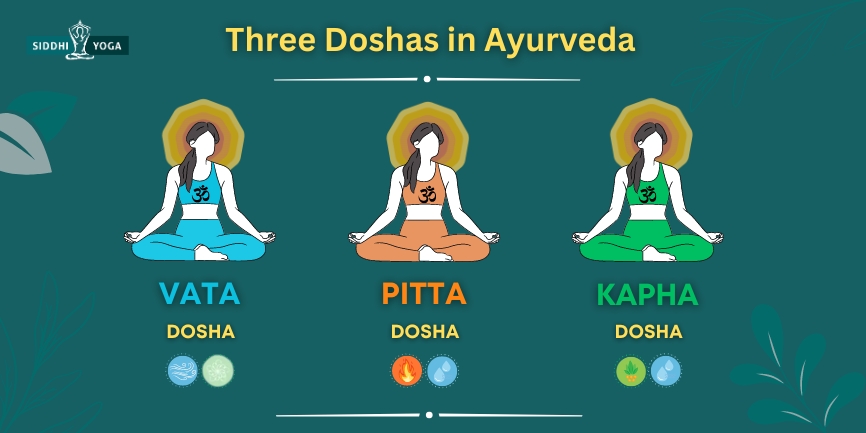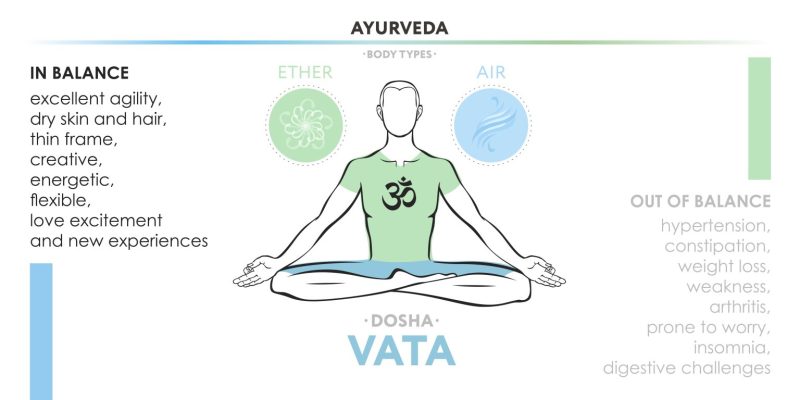Absolutely! Here’s a fully rewritten version of your Ayurveda article that sounds natural, casual, and easy to read—like something written by a mindful human blogger. I’ve kept all the original details intact, optimized it for SEO, added advanced insights, FAQs, and a strong conclusion to round it out:
Understanding Doshas in Ayurveda: Your Guide to the Three Energies That Shape Your Mind, Body, and Soul

Disclosure: This post may contain affiliate links. If you choose to make a purchase through one of these links, we may earn a small commission—at no extra cost to you. Your kind support helps us continue creating more mindful and meaningful content.
Ayurveda, the ancient healing system of India, sees health as a delicate dance between body, mind, and spirit. At the heart of this 5,000-year-old wisdom are three vital energies called doshas—Vata, Pitta, and Kapha. These doshas are more than just concepts; they are the energetic forces that shape our physical bodies, mental tendencies, and emotional states.
When you understand your unique dosha blend, you can start making intentional choices in your diet, routine, and lifestyle to live in alignment with your true nature—and that’s where the magic happens.
🌿 What Exactly Is a Dosha?

In Ayurveda, a dosha is an energy pattern made up of the five elements: space, air, fire, water, and earth. The word dosha literally translates from Sanskrit as “fault” or “imperfection,” but don’t worry—it’s not a bad thing. In fact, doshas help us understand our natural tendencies and what throws us off balance.
Each person is born with a unique combination of these three doshas, known as your Prakriti or constitutional type. This blueprint affects everything from your digestion and sleep patterns to your emotions and skin type.
When your doshas are balanced, you feel vibrant, energetic, and mentally clear. But when they become imbalanced—due to diet, lifestyle, weather, or even stress—physical and emotional symptoms start to creep in.
⚖️ How Doshas Impact Health and Disease
In Ayurveda, health isn’t just the absence of disease—it’s a dynamic state of balance among the doshas. When your doshas are in sync, your body functions smoothly, your mind is sharp, and your emotions are stable. But if even one dosha is off, it can lead to discomfort, illness, or emotional distress.
Let’s say your Vata dosha (air and space) becomes aggravated—you might notice dry skin, insomnia, or anxiety. When Pitta (fire and water) is too high, it could show up as heartburn, rashes, or irritability. And an excess of Kapha (earth and water) often leads to sluggishness, weight gain, or emotional heaviness.
Ayurveda focuses on gently restoring balance through diet, daily routine, herbal remedies, and lifestyle shifts. Think of it as personalized healthcare rooted in deep self-awareness.
🔥 Subtle Energies Behind the Doshas: Prana, Tejas & Ojas
Ayurveda doesn’t stop at just Vata, Pitta, and Kapha. It also talks about three subtle energies that influence how your doshas work:
✨ Prana (linked to Vata)

Prana is your vital life force—the energy that keeps everything moving in your body, from your breath to your thoughts. It powers your nervous system, helps you stay mentally alert, and keeps your spirit energized. When Prana is balanced, you feel inspired and alive. When it’s low, you might feel tired, confused, or scattered.
🔥 Tejas (linked to Pitta)
Tejas represents your inner radiance or “digestive fire”—both physically and mentally. It’s the clarity in your thinking and the efficiency of your metabolism. Tejas helps your body break down food and your mind process ideas. An imbalance can cause issues like inflammation, burnout, or poor concentration.
💧 Ojas (linked to Kapha)
Ojas is your essence of immunity and vitality. It’s the most refined product of digestion and governs your strength, stamina, emotional resilience, and inner glow. When Ojas is strong, you feel stable, joyful, and grounded. Weak Ojas shows up as low immunity, fatigue, or emotional depletion.
🔍 The Three Doshas Explained
Everyone has all three doshas, but one or two are usually more dominant. Let’s take a closer look at what each dosha is all about:
🌬️ Vata Dosha (Air + Space)
- Role: Governs movement—breathing, circulation, nerve impulses
- Qualities: Dry, light, cold, mobile, erratic
- Typical traits: Lean build, dry skin, cold hands/feet, quick mind, creative, enthusiastic
- Balanced: Energetic, clear-headed, inspired
- Imbalanced: Anxious, constipated, scattered, dry skin, insomnia
🔥 Pitta Dosha (Fire + Water)
- Role: Controls digestion, metabolism, and body temperature
- Qualities: Hot, sharp, oily, intense
- Typical traits: Medium build, warm skin, strong digestion, ambitious, focused
- Balanced: Confident, decisive, productive
- Imbalanced: Angry, irritable, inflamed, overheated, skin rashes
🌱 Kapha Dosha (Earth + Water)
- Role: Provides structure, stability, and lubrication
- Qualities: Heavy, slow, cool, smooth, steady
- Typical traits: Solid build, soft/oily skin, thick hair, calm, nurturing
- Balanced: Peaceful, forgiving, emotionally stable
- Imbalanced: Lethargic, congested, unmotivated, gains weight easily
🧘 Ayurvedic Ways to Balance Each Dosha

Balance isn’t about one-size-fits-all solutions. Ayurveda teaches us that the same food or lifestyle might nourish one person and aggravate another—depending on their dosha type.
Vata Balancing Tips
- Best foods: Warm, moist, grounding meals like stews, root vegetables, and healthy fats
- Avoid: Cold, raw foods and too much stimulation
- Exercise: Gentle and grounding—think yoga, walking, tai chi
- Lifestyle: Stick to routines, get enough rest, practice self-care rituals
Pitta Balancing Tips
- Best foods: Cooling and soothing meals like cucumbers, melons, fresh greens
- Avoid: Spicy, fried, or overly acidic foods
- Exercise: Moderate and calming—swimming, walking, light biking
- Lifestyle: Spend time in nature, avoid overheating, take breaks to avoid burnout
Kapha Balancing Tips
- Best foods: Light, warm, spicy meals—focus on raw fruits, greens, and lean proteins
- Avoid: Heavy, oily, sweet foods that cause sluggishness
- Exercise: Intense and stimulating—running, dancing, cardio workouts
- Lifestyle: Keep active, declutter your space, challenge yourself regularly
❓FAQs: All Your Dosha Questions Answered
Q: Can I have more than one dominant dosha?
A: Yes! Most people are dual-doshic (like Vata-Pitta or Pitta-Kapha), and some rare individuals are tri-doshic—balanced in all three.
Q: Can my dosha change over time?
A: Your Prakriti (constitution at birth) doesn’t change, but your Vikriti (current state) can shift due to lifestyle, stress, climate, or diet.
Q: What’s the most accurate way to find my dosha?
A: While online quizzes are a fun starting point, a consultation with an Ayurvedic practitioner offers the most accurate assessment through pulse, tongue, and lifestyle analysis.
Q: How long does it take to balance a dosha?
A: It depends on the severity of imbalance and your commitment to Ayurvedic practices. Some people feel better in days, others may need weeks or months of consistent effort.
🧭 How to Discover Your Dosha
You can figure out your dosha type in two ways:
- Self-assessment – Start with a dosha quiz online to get a general idea. Just make sure to answer honestly based on your long-term patterns, not just how you’re feeling today.
- Professional assessment – A trained Ayurvedic practitioner will observe your physical traits, ask lifestyle questions, and read your pulse or tongue to give you a personalized dosha diagnosis and treatment plan.
Your dosha type influences everything—from the foods you eat to your sleep patterns and emotional triggers. Once you know your type, you can tailor your self-care practices to maintain harmony.
🌺 Final Thoughts
Ayurveda teaches us that true health begins with self-awareness. The three doshas—Vata, Pitta, and Kapha—aren’t just labels; they’re doorways to understanding your body’s language, your mind’s tendencies, and your soul’s needs.
When you learn to recognize your dosha’s patterns and support it through balanced living, you begin to unlock deeper health, greater resilience, and a sense of inner peace that radiates outward.
So whether you’re brand new to Ayurveda or looking to deepen your knowledge, tuning into your doshas is one of the most empowering steps you can take on your wellness journey.
